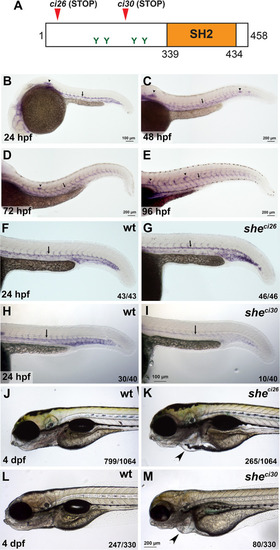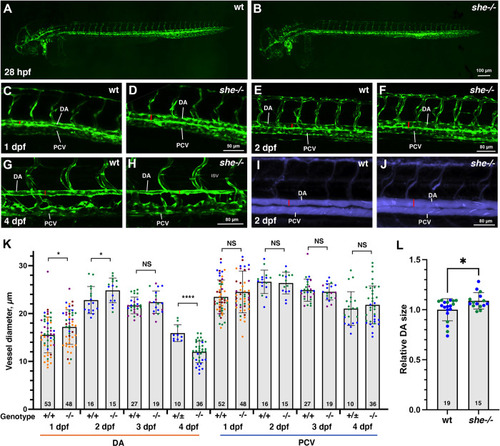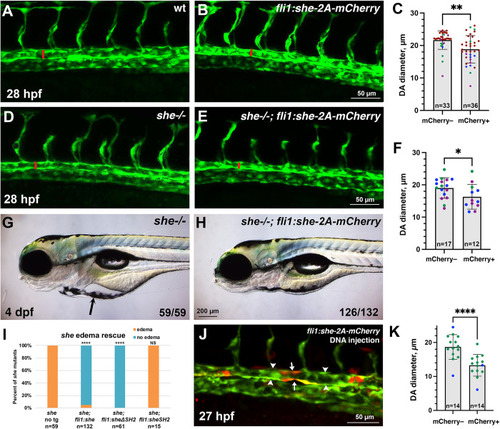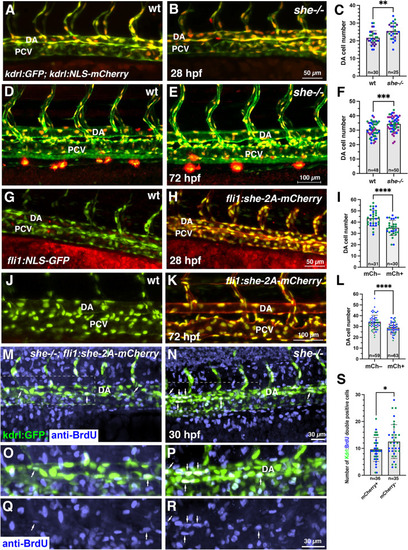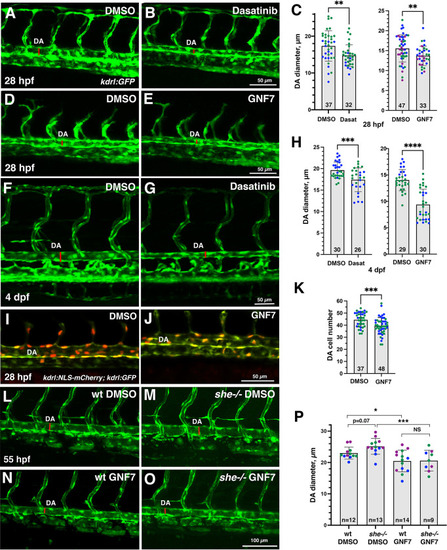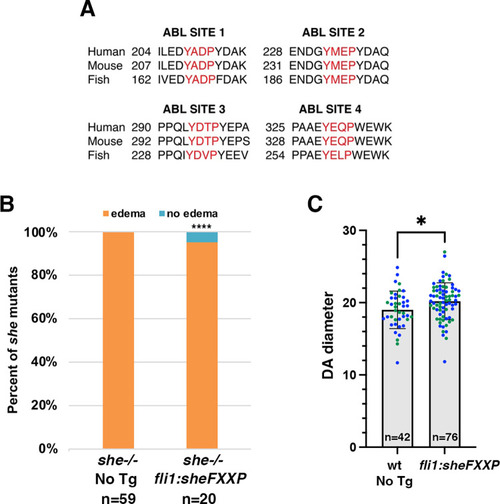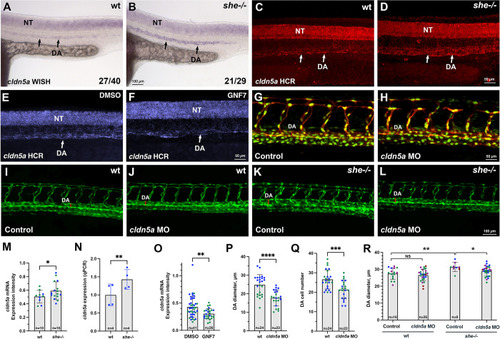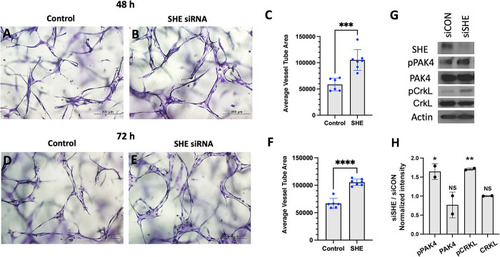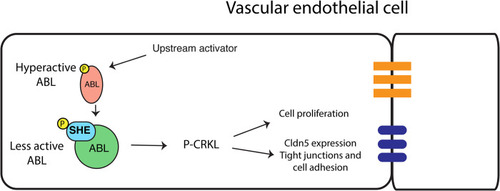- Title
-
SH2 domain protein E and ABL signaling regulate blood vessel size
- Authors
- Schumacher, J.A., Wright, Z.A., Rufin Florat, D., Anand, S.K., Dasyani, M., Batta, S.P.R., Laverde, V., Ferrari, K., Klimkaite, L., Bredemeier, N.O., Gurung, S., Koller, G.M., Aguera, K.N., Chadwick, G.P., Johnson, R.D., Davis, G.E., Sumanas, S.
- Source
- Full text @ PLoS Genet.
|
(A) Zebrafish SHE protein diagram. |
|
(A,B) Overall vascular patterning of |
|
(A-C) Quantification of trunk vasculature in wild-type and |
|
(A-F) Analysis of cell number in the DA of |
|
Inhibitors of Abl signaling reduce DA diameter in wild-type and (A-E) Dorsal aorta diameter at 28 hpf is reduced in |
|
Consensus ABL phosphorylation sites YXXP are required for SHE function. (A) Consensus ABL phosphorylation sites are conserved between zebrafish, mice and humans. (B) Vascular endothelial expression of a mutant construct |
|
She regulates vascular lumen size by inhibiting (A-D) Chromogenic whole mount in situ hybridization (WISH) (A,B) and fluorescent in situ hybridization analysis using hybridization chain reaction (HCR) (C,D) analysis for |
|
Inhibition of SHE in HUVECs results in enlarged tubulogenesis. (A-F) HUVEC cells were transfected with either control or SHE siRNA and analyzed in 3D collagen matrix assay at 48 (A-C) or 72 h (D-F) after transfection. The values (± standard deviation) are derived from 6–7 representative fields from 3 replicate wells where total EC tube area was measured. *** p<0.001; ****p<0.0001, Student’s t-test. (G) Western blots for expression of SHE and phosphorylation of PAK4, and CRKL in HUVEC cells transfected with a control or SHE siRNA. Note greatly reduced SHE expression and increased pPAK4 and pCRKL in cells transfected with siSHE RNA. Analysis was done at 48hr after transfection except for pCRKL and CRKL, which are 72 hr. Two replicate experiments were performed; full results are shown in |
|
A proposed model for SHE and ABL signaling during vascular tubulogenesis. Activated ABL promotes enlarged vascular lumen through a downstream effector P-CRKL which increases endothelial cell proliferation and increases Cldn5 expression, thus affecting tight junctions and cell adhesion. Activated ABL phosphorylates SHE, which then interacts with ABL to dampen its activity resulting in the lumen of appropriate size. |

